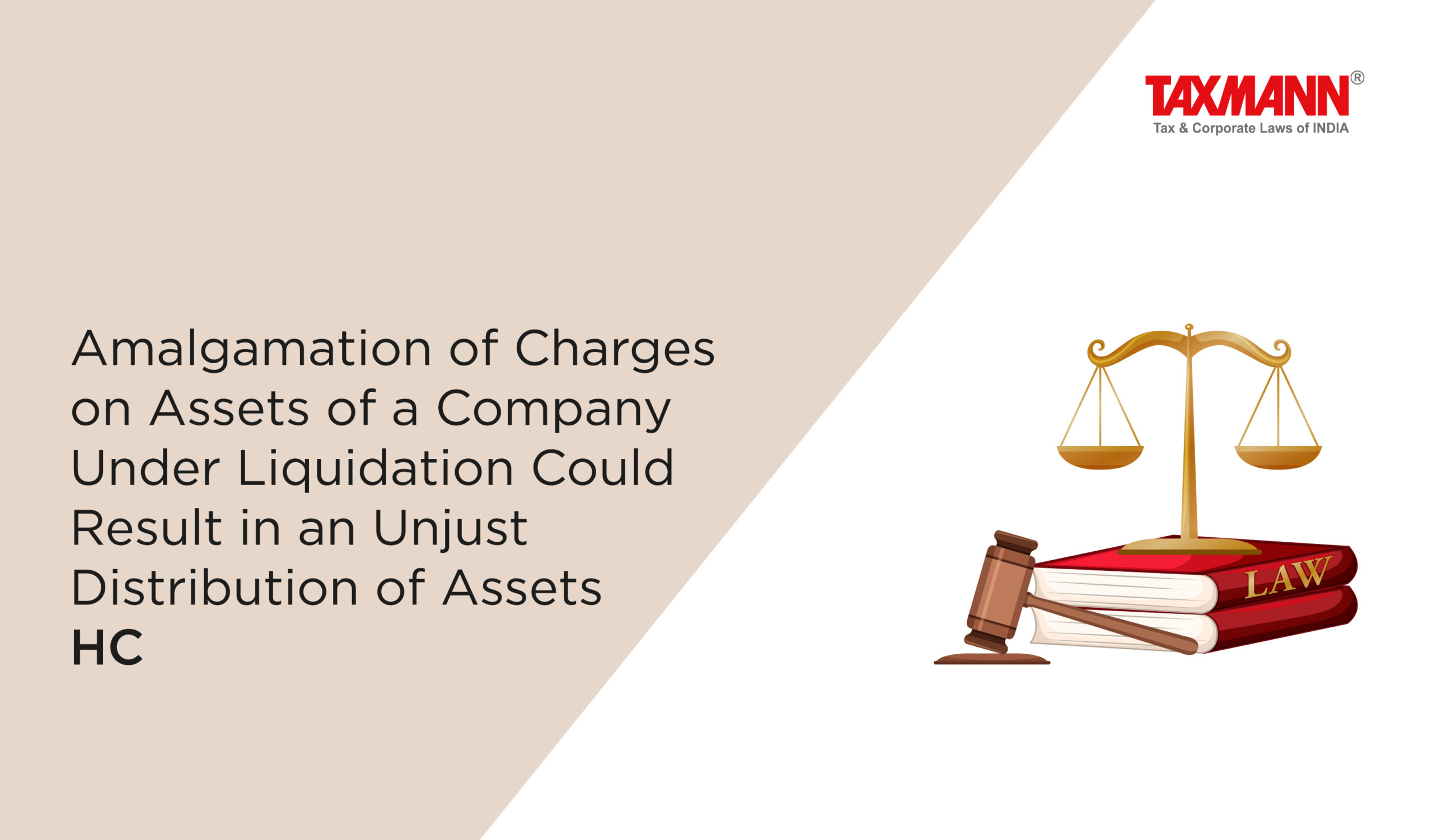Amalgamation of Charges on Assets of a Company Under Liquidation Could Result in an Unjust Distribution of Assets | HC
- News|Blog|Company Law|
- 2 Min Read
- By Taxmann
- |
- Last Updated on 20 September, 2023

Case Details: Tata Iron & Steel Co. Ltd. v. Jhalani Tools India Ltd. - [2023] 154 taxmann.com 141 (HC-Delhi)
Judiciary and Counsel Details
-
- Sanjeev Narula, J.
- Ms Ruchi Sindhwani, SSC, Ms Megha Bharara, Advocate for OL, B. L. Wali, Advocate, Sangram Patnaik, Ms Swayam Sidha Patnaik, Aman Garg, A.K. Kohli, Ankush Sharma, Ms Neeru Vaid, Dinkar Singh, Gagan Garg, Rohit Singh, Aman Vachher, Ashutosh Dubey, Amit Kumar, Advocates, Ramesh Kumar, Abhishek Gusain, Shiv Charan Sharma, Ramesh Kumar, Anil Nauriya, Ms Sumita Hazarika, Advocates & Hemendra Jailiya, Advocate for the Appearing Parties.
Facts of the Case
In the instant case, a rehabilitation scheme was approved by the Board for Industrial and Financial Reconstruction (BIFR) for a revival of ‘J’ company as a sick industrial company, wherein, the bank/applicant sanctioned various facilities including term loans to ‘J’.
Thereafter, the BIFR recommended winding up of ‘J’ and final order was issued for the same. The official liquidator (OL) of ‘J’ was allowed to disburse payments to secured creditors who held security of fixed assets i.e. first charge holders and to secured creditors who held a charge on inventories of ‘J’ i.e. second charge holders.
The applicant filed an instant application and contended that it held the first charge in respect of the said term loan and a second charge in respect of additional working capital facilities.
Further, the applicant contended that the entirety of dues owed to secured creditors must be computed as a single unit against dues of workmen for calculating pro rata shares and calculation should disregard the distinction between the first and second charge.
It was found that allowing amalgamation of first and second charges could result in an unjust distribution of assets, jeopardizing the interests of workmen and subverting the purpose of legislative provision.
High Court Held
The High Court held that the first and second charge holders could not be treated equally. Accordingly, the instant application was to be dismissed and costs of Rs. 10 lakhs were to be imposed on the applicant.
List of Cases Reviewed
-
- Bokiyu Tanneries Ltd., In re 2006 (69) DRJ 513 (Delhi) (para 23)
- Crips Laboratories Ltd., In re [MANU/AP/0166/2008] (para 32) distinguished.
- ICICI Bank Ltd. v. Sidco Leathers Ltd. [2006] 67 SCL 383 (SC) (para 24) followed.
List of Cases Referred to
-
- Bokiyu Tanneries Ltd., In re 2006 (69) DRJ 513 (Delhi) (para 12)
- Jitendera Nath Singh v. Official Liquidator [2012] 27 taxmann.com 24/116 SCL 215 (SC) (para 18)
- ICICI Bank Ltd. v. Sidco Leathers Ltd. [2006] 67 SCL 383 (SC) (para 20)
- Crips Laboratories Ltd., In re [MANU/AP/0166/2008] (para 29)
- Textile Labour Association v. Official Liquidator of Jubilee Mills [2000] 99 Comp. Cas. 189 (Guj.) (para 33).
Disclaimer: The content/information published on the website is only for general information of the user and shall not be construed as legal advice. While the Taxmann has exercised reasonable efforts to ensure the veracity of information/content published, Taxmann shall be under no liability in any manner whatsoever for incorrect information, if any.

Taxmann Publications has a dedicated in-house Research & Editorial Team. This team consists of a team of Chartered Accountants, Company Secretaries, and Lawyers. This team works under the guidance and supervision of editor-in-chief Mr Rakesh Bhargava.
The Research and Editorial Team is responsible for developing reliable and accurate content for the readers. The team follows the six-sigma approach to achieve the benchmark of zero error in its publications and research platforms. The team ensures that the following publication guidelines are thoroughly followed while developing the content:
- The statutory material is obtained only from the authorized and reliable sources
- All the latest developments in the judicial and legislative fields are covered
- Prepare the analytical write-ups on current, controversial, and important issues to help the readers to understand the concept and its implications
- Every content published by Taxmann is complete, accurate and lucid
- All evidence-based statements are supported with proper reference to Section, Circular No., Notification No. or citations
- The golden rules of grammar, style and consistency are thoroughly followed
- Font and size that’s easy to read and remain consistent across all imprint and digital publications are applied





